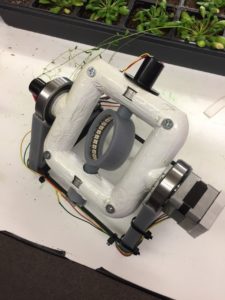Clinostat
Ground Control Research Tool

- Full Name: Clinostat
- Also Known As: RPM (Random Positioning Machine)
- Inventor: Julius von Sachs
- Focus Areas: Gravitropism Research
- Type: Ground Control
Summary
A clinostat is a piece of equipment that continuously rotates a sample in a way that is meant to mimic microgravity. Astrobotany researchers can use clinostats to stress plants of interest. Using clinostats for plant space research will hopefully provide more insight into the effects of gravity on plant biology, without all the hassle of sending plants into space.
A gravitropic assay is a common experiment performed by astrobotanists. Using a 2-d or 3-d clinostat, a plant (typically Arabidopsis thaliana) is stressed in a way that mimics components of gravity by rotation. The analysis is performed using RootTrace software. Usually, gravitropic assays cause abnormalities in root growth, typically resulting in a skewing of roots.
A 90-degree rotation every 10 minutes is ideal to combat the sedimentation of statoliths.

The clinostat pictured above was developed by the Biotron Lab in Madison, WI. The plant in the back is the control: it experiences no rotation. You can see that it still senses gravity in a typical sense because its shoots are growing upwards. In contrast, the plant in front is rotated 360 degrees every 20 minutes. This changes how the plant senses gravity and therefore it is growing parallel to the ground.

This clinostat is an advanced prototype developed by engineers in the Gilroy Lab at the University of Wisconsin-Madison. It rotates independently on different axes to achieve a more thorough gravity-altering effect that is reminiscent of a random positioning machine. The LED lighting strip provides color variation for the petri dish inside.
